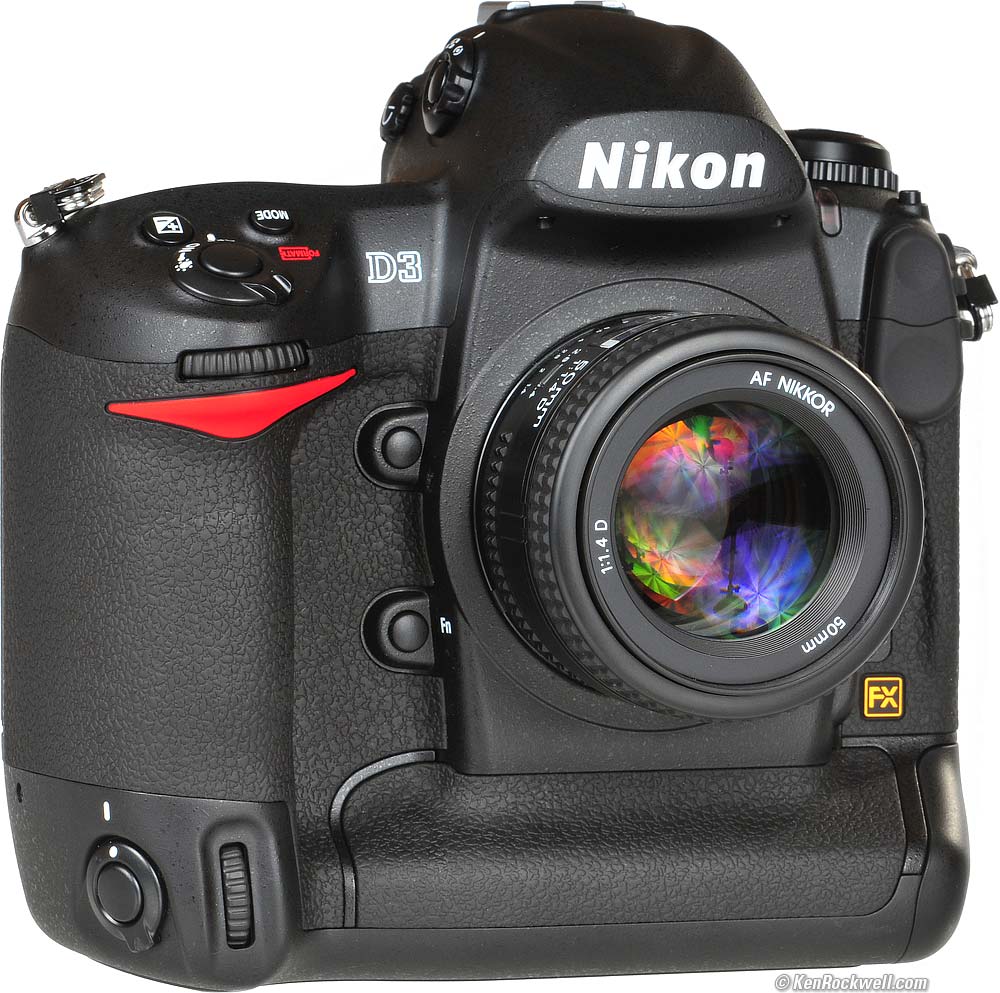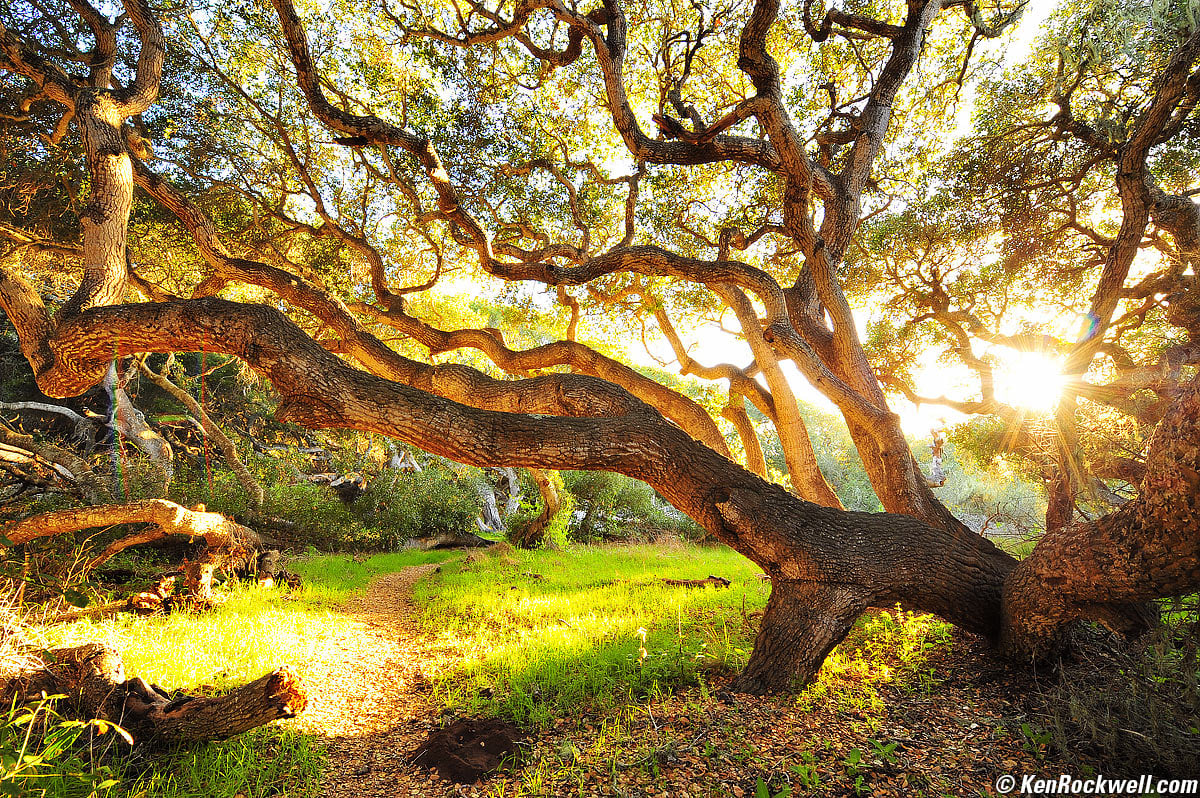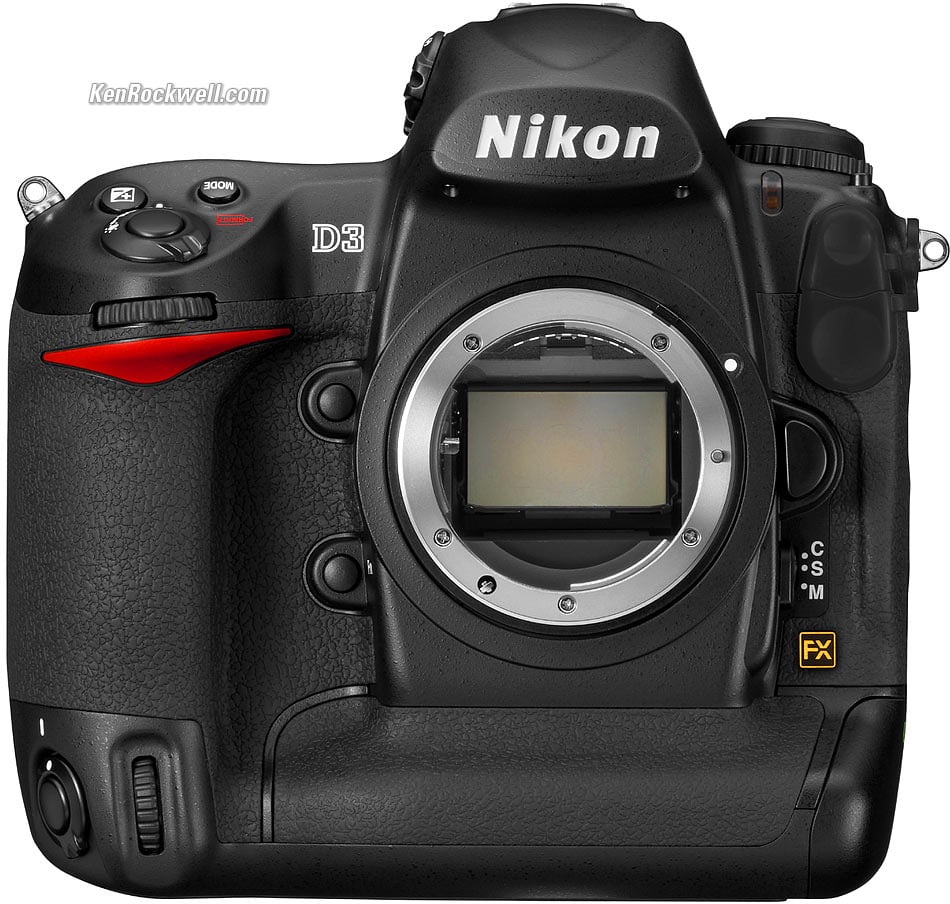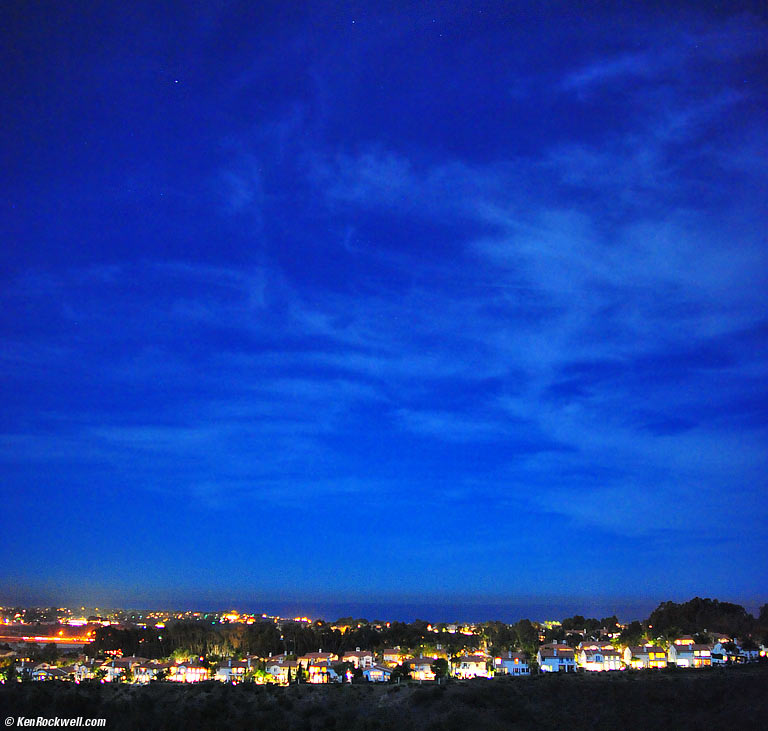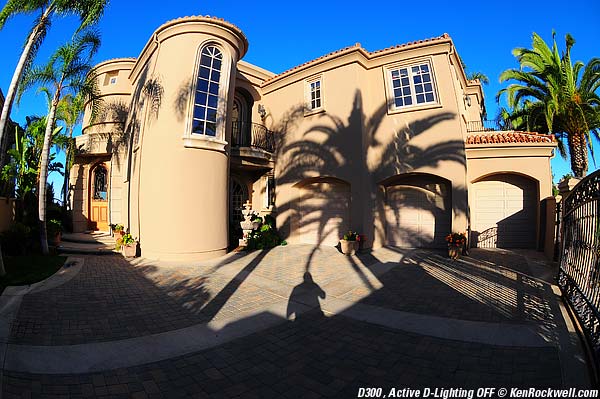Home Donate New Search Gallery How-To Books Links Workshops About Contact
Nikon
D3
12 MP FX, 9 FPS, 3" LCD (2007-2010)
Nikon D3 with 50mm f/1.4 AF-D (50.0 oz./1,417g with battery and cards, about $400 ~ $700 used if you know How to Win at eBay, or about $700 ~ $1,900 used at Amazon). bigger.
This free website's biggest source of support is when you use any of those or these links when you get anything, regardless of the country in which you live.It helps me keep adding to this free website when you get yours through these links — but I receive nothing for my efforts if you buy elsewhere. Thanks for your support! Ken.
June 2021 Nikon Reviews Nikon Lenses All Reviews
Nikon D3. enlarge.
Nikon D3. enlarge.
Pro DSLR Comparison 03 February 2016
Nikon D810, D800E, D600 and D3 Sharpness Comparison. 30 July 2014
Nikon D3s, an improvement to the D3
Nikon D7000 Sharpness versus FX 09 November 2010
Nikon D7000, D300, D3 (D700) and Canon 5D Mark II High ISO Comparison 08 November 2010
Nikon D3100, D3 and D40 High ISO Comparison 29 September 2010
Nikon D3s, an improvement to the D3
Sample Images from California's Central Coast June 2010
Nikon D40, D5000, D300 and D3 high ISO comparison 27 May 2009
Nikon D3X, D3, D40, and Canon 5D Mark II, 5D and SD700 Sharpness Comparison 13 January 2009
Nikon D3X, D3, and Canon 5D and 5D Mark II ISO 3,200 Comparison 09 January 2009
Nikon D3X, D3, and Canon 5D Mark II ISO 6,400 Comparison 09 January 2009
Nikon D3 and Canon 5D Mark II ISO 25,600 Comparison 09 January 2009
Nikon D90, D3, D300 and D200 ISO 3,200 Comparison 18 September 2008
Nikon D90, D3, D300 and D200 Sharpness Comparison 18 September 2008
Nikon D3 Plain-English User's Guide 26 August 2008
Introduction top
My Nikon D3 lets me do things I've never been able to do, and makes it fast and easy. You don't need a review: unlike any other camera I can recall, just talk to anyone who owns the D3 and you'll hear praise gushing like no other camera. The Nikon D3 has no "buts," as in "I love it but..." Everyone just loves it. You'll hear the same thing from any photographer who had his hands on one for just a few minutes. The more someone knows about serious shooting, the more they love the D3.
The D3 just goes. It shoots and you get great images, period. Nothing is slow or gets in your way. It just goes.
The Nikon D3 is a professional news, sports and action camera, but it's decent for landscapes, too.
NEW: Read also my Nikon D700 review of August 2008. The D700, a newer camera, is better than the D3 for most people. The D3 is for full-time news and sports pros who bleed for speed, while the D700 is probably a better idea for everyone else for weddings, nature and landscape pros, part-timers and serious amateurs.
Nikon D3 vs. D700 vs. Canon 5D.
NEW: Nikon D3, D700 and D300 Sharpness Shootout 14 August 2008
NEW: Nikon D3, D700 and D300 ISO 3,200 Shootout 13 August 2008
$500 Nikon D3 buffer upgrade. I couldn't' care less, but for people who insist on shooting 14-bit NEF at 9 FPS, here you go. 29 July 2008
Canon 1Ds Mk III vs. Canon 5D vs. Nikon D3 28 July 2008
The Nikon D3 is taking the sports world away from Canon by storm. You can see some great photos here of Le Tour de France, and this shot in particular shows Nikons all over. Remember, magazine ads showing white lenses are staged photos, not the real world. Canon makes no full-frame pro sports camera.
Nikon D3 firmware v2.0 updates.
How to Use the Nikon D3 Autofocus System.
Example Photo: top
Oaks, California, May 2008. bigger or full-resolution or © camera-original file (5MB). Nikon D3, 14-24mm f/2.8 at 14mm, f/11 at 1/8, ISO 200.
The Nikon D3 is a lot more than reading reviews and specifications could ever suggest. Just like the D300, the D3 has image processing tricks that makes it easier to create exactly the image I want over even more conditions than ever before. The D3 then adds more speed, more finesse, more lens choices, triple the battery life of the D300 and a real-time viewfinder camera-level display on top of it.
The Nikon D3 is the best camera ever made by Nikon. It was announced on August 23rd, 2007. As of the beginning of 2008 it's just starting to trickle into the hands of photographers.
The Nikon D3 excels for news, sports and event photography where you need it to work under any condition. If you get knocked over and knocked out, you'll come up shooting with the D3 even if you're still seeing stars. The D3 just works as an extension of your imagination.
Nikon cameras, even the rangefinder cameras of the 1950s, have always been about hand-held use for news and sports. The Nikon D3 is the best of over 50 years of continuous camera and lens development.
The Nikon D3 incorporates many new tricks to let me create visibly better images more easily. It plays many subtle (and not-so-subtle) tricks to let me get better colors, better grays, better highlights and better shadows than any previous camera. The Nikon D3 even fixes lateral color fringes in some lenses. The Nikon D300 shares these same tricks.
The Nikon D3 is the first digital Nikon to use the full 24x36mm image area of traditional 35mm still film.
Nikon D3. enlarge.
My D3 really can crank at 9FPS, and the best part is that it only costs as much as every previous pro Nikon camera: $4,999.95.
Canon has nothing close: Canon DSLRS are either slower or smaller format. Canon has slower cameras with higher resolution more suited to landscape, studio and portrait photography.
While some people who don't have D3s have the time to fret over reviews and trifle over meaningless details, everyone I know who has a D3 is marveling at how it just works and lets them come away with great images. It just gets out of our way, which is the greatest compliment any photographer or artist can bestow on any tool.
My D3 works in more crazy lighting conditions than any previous camera. I can shoot at ISO 6,400 without any excuses. I can get good color rendition in any crappy lighting, even under orange high-pressure sodium street lights, due to the astoundingly large range of accommodation of the manual PREset (gray card) white balance.
For instance, here's a shot made under moonlight, hand held:
Sea under Moonlight, La Jolla, California (hand-held!)
Nikon D3, Nikon 28mm f/1.4 AF-D, program auto exposure (1/4 sec @ f/1.4), auto-ISO chose ISO 6,400, tungsten WB to make the sky blue, auto focus. All I did was point and shoot from my usual settings, except for making the critical change to the WB to make the sky blue. What are the white dots in the sky? Those are the stars!
No other camera could do this without a tripod, much less as a grab shot. Tripods are for wimps. See the dot at the top left? That's a planet.
The wide lens, a 28mm true and equivalent on the D3, lets me hand-hold a stop slower than a 50mm lens. I easily can get sharp shots at 1/4 second with a 28mm lens, firing a burst and picking the best. This shot is under a nearly-full moon. It's what I was expecting I could do with the D3 and a fast lens. I didn't need the higher ISOs; people with less steady hands might. You could get this, albeit much grainier, at 1/15 at ISO 25,600 at f/1.4. Wait for the really full moon at Zenith and you'll be at 1/30 at ISO 25,600.
Not only do I have my D3 set to choose the exposure and ISO automatically exactly as I would do, my D3 easily autofocused all by itself. Except for choosing a tungsten white balance to make the sky blue, if the sun came up my D3 would instantly set itself back to ISO 200 and a more reasonable exposure to grab whatever happened, perfectly.
I always shoot everything on Auto. I spend a lot of time presetting my cameras as I want them so all I have to do is point and shoot. A first for Nikon, you can save these settings as files which can be loaded on CF cards and shared among cameras. Here's my usual setup; try copying this NCSETUP2.BIN file to a CF card, stick it in your D3 and use MENU > WRENCH > Save/load settings > Load Settings to copy them to your camera. Watch it; this file is set to mark my images' EXIF data with my copyright info and prefixes the files with my choices of letters, so be sure to change these on your camera if you want them differently.
My Nikon D3 gives me:
Better Color top
Like the D300, the Nikon D3 allows me to set more vivid colors than any previous Nikon or Canon I've used.
Cranking up the colors gives me a look I love. It isn't simply blotto saturation. The D3 has a special magic about its colors when cranked up. It warms warm colors just as Fuji Velvia 50 does, without altering the cool colors.
I explain how to crank it at Nikon D3 and D300 Picture Controls.
This great color is enough of a reason to buy a D3 (or D300). Even a blind person can see the difference–you don't need a microscope.
Better Composition top
I've never seen a better finder than the one in my D3. It's big, bright and sharp - a far cry from the wimpy DX finders for which people settled in early days of digital photography. It's bigger than the D300 or any other small-format DSLR of which I know. Heck; any crummy discount 35mm film SLR from the 1980s has a bigger, better finder than any professional small format DSLR, even a D2X, from what I've seen.
For the first time since the extraordinary F4 of 1988, the D3 has a clear finder. It is even clearer than the D300's finder, because a.) the AF region and 12mm graticule is lighter (almost invisible, thank goodness) , and b.) the AF areas light up in red from out of nowhere, instead of going black as they do in the D300.
Let me emphasize that there are no scratched-in AF areas to interfere with composition. The D3 only lights up AF areas as needed, otherwise the finder is completely clear!
Better, there are so many AF areas that I can compose-in-place. No longer do I have to focus and recompose, or be lazy and compose based on the location of the AF areas.
The dummy auto AF-area selector mode (white rectangle on the selector) works great. It lets me compose and press the button to take a picture, skipping the old focus and recompose step of the past 75 years of hand-held photography!
Thank God! These focusing and composition improvements alone would be enough reason to buy a D3. Do you have any idea how pleasant it is to have a finder without all the garbage on top of your focusing screen?
Other DSLRs still use the obsolete 3:2 aspect ratio of 35mm film. This has always been too long and skinny for most shots, especially verticals. That's why 35mm shots so often have the ends cropped off when printed, or have blank sides lacking a subject in many uncropped amateur shots. 35mm still film has had this problem since its asthmatic inventor used this longer rectangle to cram a slightly larger still format onto 35mm movie film back in the 1920s.
Sadly, most DLSRs blindly copy this inefficient aspect ratio. 35mm SLRs have been using it since the 1930s. No one else is thinking.
Professionals shoot squarer 6 x 7cm or 4 x 5" film, which fits standard photo paper sizes like 8x10" and 16 x20." These squarer sizes are more efficient because most subjects fit a 5:4 rectangle (or 4:5 vertical) better than the longer, skinnier 35mm frame. Of course every subject is different, but most paintings and photos tend to fit the best in about 5:4, which is why the pro formats are this shape. Other shapes tend to result in more cropping. Artists don't compose to fit a frame; we compose as we want and crop later. 5:4 tends to result in the least wasted canvas or image.
The default of the D3 is still the old 24x36mm size. What makes the D3 smarter is that it adds a mode that allows images in the standard 5:4 shape. I set my D3 so I can change aspect ratios with one button. This way I can shoot verticals that aren't so foolishly tall and skinny.
5:4 images fit in my file browsers and sorters better. Shooting in this aspect ratio lets me see bigger images as I sort, and they waste less file size.
The D3's finder magically masks itself as you change image shapes. Now I wish the D3 had the foolish 13x36mm cropped Panorama mode of earlier film cameras, like the 35Ti.
The D3 also has Digital Zoom, where you can flick between FX and DX with the same FUNC button (set MENU > Wrench (Custom Setting) > f4 (FUNC button) > FUNC button + dials > Choose image area.) Laugh all you want, but I love being able to change framing with my fast fixed lenses.
Better Highlights and Shadows top
The D3, along with the D300, has a remarkable ability to tame extreme highlights and shadows, automatically. (You have to activate ADR in the menus, it's not a default). Nikon calls this "Active D-Lighting" in the D3's menus, which means nothing. I call it Adaptive Dynamic Range, or ADR.
Roll mouse over to see how ADR fixes blown-out, pizza-like highlights.
The Nikon D300 and D3, when ADR is set ON, have an uncanny ability to handle huge dynamic ranges better than any other Nikon. The D3 and D300 are the first Nikons that don't go blotto when overexposed. Just like film, being 1/3 or 2/3 stops over just makes the image lighter, not blowing-out facial highlights to look like old pizza!
The weakest point in digital capture, even in Hollywood's $250,000 digital cinema cameras which still can't replace film, has been that colored highlights, like sunsets, foreheads and bright stucco walls, turn into bands of weird colors as they wash out to white. The D300 appears to have conquered the problem so its highlights take on the same natural shoulder as film. Look carefully at how the hue of the wall changes from red to yellow as it washes out (ugly), but retains the same hue as it lightens with ADR ON.
These dynamic improvements alone are reason enough to get a D3 or D300.
Sharper Pictures top
The D3 has an amazing automatic ability to fix lateral color fringes.
The D3 actually makes lenses look better than they are!
This gives better, sharper results. There's no need to activate this, it just works, with AF and even old manual focus and fisheye lenses.
Because of this, the D3 also can make clearly better images in DX mode than other older DX cameras, even if they have higher resolution, with many lenses. (The D3's DX resolution is only 5 MP.)
I have compared this, but not exhaustively. If you want the best quality in DX and don't care about speed, the D300 does a better job and shares the D3's same innovations.
The D3 is unique in doing this for full-frame as well as DX images.
Insanely High ISOs that Look Good top
ISO 6,400 is normal. Use it all you want without any excuses. I know of no other digital camera that can do this. Here are some crappy party snaps made in almost no light at ISO 4,000. The D3 did a perfectly fine job, even if the color of the lighting didn't cooperate.
ISO 12,500 can be grainy, and ISO 25,600 is downright loaded with red dots, but still usable when you need it.
I only need ISO 6,400 to shoot under moonlight with my 28mm f/1.4 lens. You might need more with slower or longer lenses.
9 FPS - Easy! top
My D3 really can run at 9 FPS. I've clocked it, and it loves it.
Remember that exposure times add up when you have 9 of them in a second. Even at 1/60 you'll slow down the D3.
It also runs at 11 FPS without sequential metering or AF tracking in DX mode.
Wider Angles Than Any Other Pro DSLR System
The widest Nikon non-fisheye lens for a DX camera is the 12-24mm DX. In reality, it gets no wider than a 20mm lens on 35mm film or FX. Try it and you'll see.
With a 14mm or 14-24mm lens, I get a real 14mm equivalent on the D3. I'd need a nonexistent 9mm lens on a DX camera to give the same view.
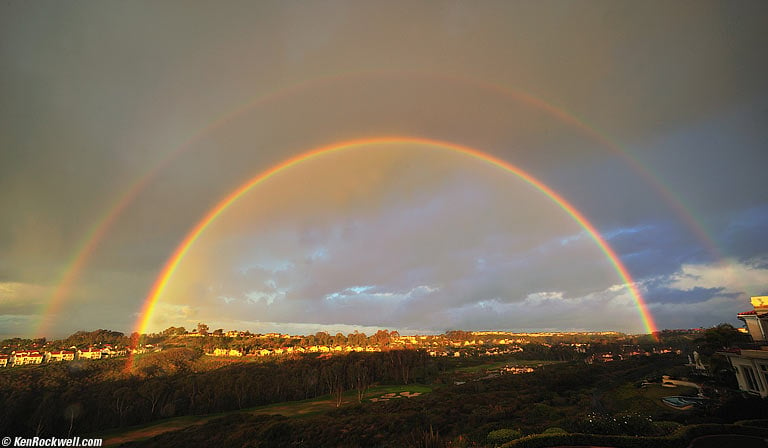
Double Rainbow. Nikon D3, Nikon Nikkor 13mm f/5.6 AI-s.
The Nikon system includes a 13mm f/5.6 non-distorting lens made from 1975-1998. There are none available anywhere, but if you have one, you just outdid every other professional SLR system on earth.
Faster and Easier to Use top
The AF system just works. Set to the All Areas dummy mode (the big white rectangle), it really just finds the correct sensors and uses them without you or I having to jack any switches around for each shot.
From a convenience aspect, the larger 3" LCD screen is nice, but far nicer is how much faster playback responds to button presses. I can scroll around a magnified image much faster, and RGB histograms come up instantly instead of bogging down for a full second for each image as they did on the old D200.
7 Times the Battery Life of the D200, and 3 Times the Battery Life of the D300! top
My D3 gets about 3,000 shots per charge. My D300 gets about 1,000, and my D200 gets about 450.
I've made over 10,000 shots with my D3 in the past six weeks, and can't remember when I last charged it. I'm not buying a spare battery.
Minor D3 Complaints top
The only blunders of the D3 are trivial annoyances. The hackers haven't discovered any vast-conspiracy-style flaws like the banding of the D200 or the blinking green-lights-of-death of the D70. (Nikon fixed all those under warranty, and I never saw those problems on my cameras.)
1.) Replace the idiotic, multiple and still incomplete Settings Banks fiasco with something sensible like Canon's C1 and C2 controls on a mode dial.
2.) Auto ISO is still partially defective in manual exposure mode. It doesn't automatically deactivate when you go to manual exposure! You have to go to the menus to turn it off in manual exposure, otherwise the D3 tries its best to screw with your manual exposures. The D3 needs an additional menu option labeled "Deactivate Auto ISO during Manual Exposure?"
3.) The Fn button can only be programmed to do half of what it does on the D200. Specifically, on my D200 I have it set for flash exposure lock and hold, and to allow me to enter the focal length and speed of manual focus lenses for matrix metering. On the D3, I only can get one of those functions and have to trudge through menus again to get the other function. New on the D3 is the option to let the Fn button call up the level display in the right-hand bar graph!
4.) Manual lens data now only can be entered though deep menus. Once entered (only 9 lenses maximum, and each setting on a zoom takes one memory) you might be able to select among them with the Fn button, but forget easy, instant direct adjustment as you change lenses as you can on the D200. The D3 is similar to the F6 (10 memories), but the F6 makes better use of the Fn button.
If you use a couple of manual zooms, you can quickly fill the 9 spots. If you use a 28-85mm AI-s and an 80-200mm f/4 AI-s, those two lenses just stole 8 of the 9 spots! You'd need to program 28mm f/3.5, 35mm f/3.5, 50mm f/4 and 85mm f/4.5 for the 28-85mm, and then 80mm f/4, 105mm f/4, 135mm f/4 and 200mm f/4 for the second zoom. That leaves only one spot for an 8mm circular fisheye, an ultrawide or a long tele. I'm often having to revert to the menus, unlike the D200 which lets me set these directly.
This doesn't matter for any autofocus lens, since the D3 reads all the info directly. It only matters to people like me who also use Nikon's exquisite manual focus lenses. Thank God we shoot Nikon; Canon sh*t-canned manual focus FD lens compatibility back in 1985!
With Nikon and manual focus lenses, even ones from the 1950s that have been AI converted, we get matrix metering and full finder readout and EXIF data.
5.) There is no spring inside the CF card door to ensure the CF cards are fully seated when I close the door. I forgot once, and the D3 was alternately writing to the other CF card! It confused the dickens out of me until I figured out where the photos I was taking were going, since when the card wiggled out I only could see the half that made it to the second card.
This shows how great it is to have two CF cards loaded: any problem, and the D3 just goes on shooting.
6.) Custom function e3, modeling flash, is still set ON by default. This can cause blindness since it fires off a long, unexpected burst of flash when you hit the depth-of-field button. The first thing I did on my D3 after I cranked the saturation all the way up was to set e3 to OFF.
Everything has design flaws, don't worry. The fact that no one has found any real flaws with the D3 says a lot.
D3 Suggested Improvements top
(1 - 5 fix issues above.)
1.) Add "Cancel Auto ISO in Manual Exposure Mode?" menu option. (invention disclosure February 2008 or before.)
2.) Fix the broken Fn button so it can work as well as it did in the D200.
3.) Make manual lens data as easy to enter as in the D200. Make manual lens data appear in finder, with focal length displaying in the shutter speed digits and the f/stop in the f/stop display, when being changed via the Fn button.
4.) Add a card-seating spring in CF card door.
5.) Set CFN E3 OFF by default so no one goes blind.
6.) Add a third, deeper, position in the shutter button, so we get Cl normally, but get Ch when we press HARD. This way way we can shoot normal stuff normally, and when the sh*t hits the fan, just push harder to blast at 9 FPS. This way we never miss the moment having to take the camera down to set it up to Ch. We can't leave it in Ch because too often we get two shots or more with each slow target/sniper-rifle-trigger push. (invention disclosure February 2008.)
7.) Add menu option in Auto ISO: "Set Lowest Shutter Speed based on Focal Length," and follow it with a factor, like 4x, 2x, 1x, 1/2x, 1/4x, etc. (invention disclosure February 2008 or before.)
This way we don't have to jack around the Lowest Shutter Speed setting as we zoom and change lenses.
8.) Now that we can set the colors to insane, much as Canon DSLRs have done since about 2004, we also need a faster way to get to our color settings than jacking through the menus with two hands. We need a dedicated hard switch to select among a few preset Picture Controls, just as we select AF Zone modes with a rotary thumb switch on the rear.
I need this because I set the colors to VIVID and +3 saturation most of the time, but if a person is in the shot, I throttle back to STANDARD and +2 saturation. On Canon we have been able to program the equivalent of the middle button of the multi-way thumb selector to call up our banks of preset Picture Controls to allow instant changes as fast as we change WB. Nikon needs to add this; having Manage Picture Settings in My Menu isn't fast enough. If it takes more than one click, the click I need to set the next menu could have been the click for the photo I just missed.
For instance, my tiny Casio EX-V8 pocket camera does this better. The Casio, a camera smaller than a deck of cards, has a knob on it with eight positions, and I can set at least two of them to totally different color settings. Thus I can shoot a thing in one position, and completely without menus, just turn the knob a click to get to my milder color settings for people. (I set the Casio's red rectangle to +2 saturation and +2 contrast, and set a BS mode, chosen with the [BS] setting next to the red rectangle, to +- 0 saturation and -1 contrast.)
9.) Nikon's color Matrix meter is the smartest on the planet. It is largely infallible when used with film or normal digital camera color settings.
The D3 still isn't smart enough to have the Picture Controls talk forward to the meter as does ADR. If I have the saturation cranked in Vivid mode, many colors overexpose slightly, so I have to set exposure compensation back to -0.7 because the Color Matrix meter isn't taking the picture controls into consideration. Now when I shift Picture Control between VIVID for things and NEUTRAL for people, I also have to shift exposure compensation.
The D3 should be improved so that the color Matrix meter takes Picture Control settings into account when setting exposure. (invention disclosure 10:22 AM PDT, 25 June 2008.)
10.) Since I need NEUTRAL Picture Control for people and VIVID for things, even better than having an easy way to do this would be to allow the user to allow the facial recognition system to swap among picture controls if it sees a face. Two new menu options would be added|
ALLOW AUTOMATIC SELECTION OF PICTURE CONTROL WHEN A FACE IS DETECTED Y/N?
and as a submenu of the above if YES:
SELECT PICTURE CONTROL TO BE USED WHEN A FACE IS DETECTED (option to select any of the Picture controls)?
(invention disclosure 10:30 AM PDT, 25 June 2008.)
11.) Since face recognition knows where the faces are, why set the entire image to a picture control if you could have the background set to one Picture Control, like VIVID, and have the D3 automatically recognize and apply another PC to the faces?
I'm serious: studio TV cameras have done this for years to apply selective softening to make talent look much younger.
Menu options, in addition to the above, would be:
APPLY LOCALIZED PICTURE CONTROL TO FACES? Y/N
and as a submenu of the above if YES:
SELECT PICTURE CONTOL APPLIED TO FACES ONLY (choose).
(invention disclosure 10:33 AM PDT, 25 June 2008.)
12.) When I shoot fast, I want Image Review OFF, and when I shoot slowly, I want it ON. Nikon's Setting Banks don't save and recall it, so as I shift styles I always have to dig into the menus, which sucks. Nikon should redo the firmware so that holding the PLAY button for more than two seconds toggles this mode on and off. (invention disclosure 1:23 PM PST, 26 February 2008.)
13.) Improve manual focus indication to work as Canon has done for years. In Canon, each sensor blinks in red as perfect focus is achieved there. Canons are great: turn the manual focus ring, and sensors blink at the exact instant each part of the image pops into focus. It makes manual focus ten times faster than Nikon's single-sensor-at-a-time null indicator.
14.) For all cameras, in Auto ISO mode and most exposure modes, re-assign the shutter speed dial (rear or front control dial on most Nikons) to control the lowest shutter speed permitted at which Auto ISO starts increasing the ISO. In program mode, one command dial will be program shift, the other will be the lowest shutter speed setting. While it's turned, the viewfinder display should show the set lowest speed as it's being adjusted, and return to actual exposure display as soon as the adjustment is complete.
(invention disclosure 1:07 PM PDT, 08 July 2008.)
15.) Bring back the pro trick that holding the "Key/?" button as you turn on the power creates a new folder and saves the new images you make to it. This is extremely handy in cameras that have it because when you load the images into your computer they already will be sorted into folders. I find this extremely helpful, and much faster than creating new folders in the menus.
More Pages of My D3 Review top
This review has dozens of detailed pages about the D3. This page above has been the summary of what's really important.
Listed Alphabetically:
High ISO Comparison: D300, D200, D3 and Canon 5D
High ISO Comparison vs Canon 5D (same lens)
Performance: Shooting (pre-sensor)
Performance: Capture, Processing, Data and Display (post-sensor)
Picture Controls and Image Settings
Sharpness Compared among D300, D3 and Canon 5D
More Information:
© Ken Rockwell. All rights reserved. Tous droits réservés. Alle Rechte vorbehalten.
Help Me Help You
I support my growing family through this website, as crazy as it might seem.
The biggest help is when you use any of these links when you get anything. It costs you nothing, and is this site's, and thus my family's, biggest source of support. These places always have the best prices and service, which is why I've used them since before this website existed. I recommend them all personally.
If you find this page as helpful as a book you might have had to buy or a workshop you may have had to take, feel free to help me continue helping everyone.
If you've gotten your gear through one of my links or helped otherwise, you're family. It's great people like you who allow me to keep adding to this site full-time. Thanks!
If you haven't helped yet, please do, and consider helping me with a gift of $5.00.
As this page is copyrighted and formally registered, it is unlawful to make copies, especially in the form of printouts for personal use. If you wish to make a printout for personal use, you are granted one-time permission only if you PayPal me $5.00 per printout or part thereof. Thank you!
Thanks for reading!
Mr. & Mrs. Ken Rockwell, Ryan and Katie.
